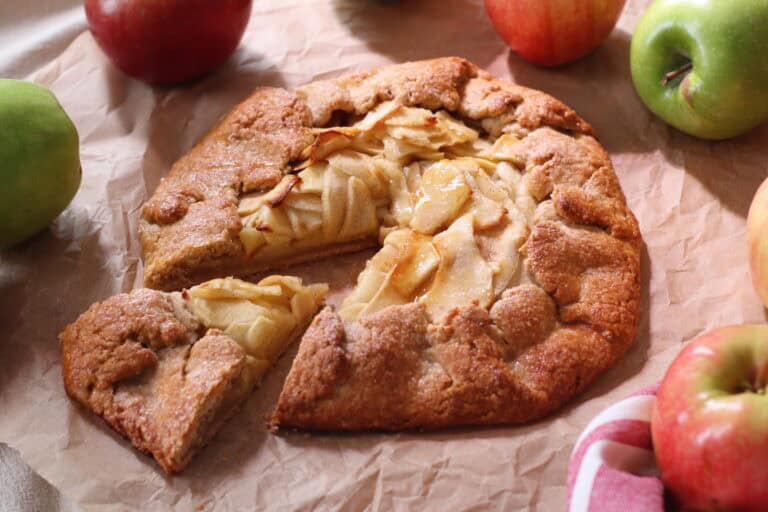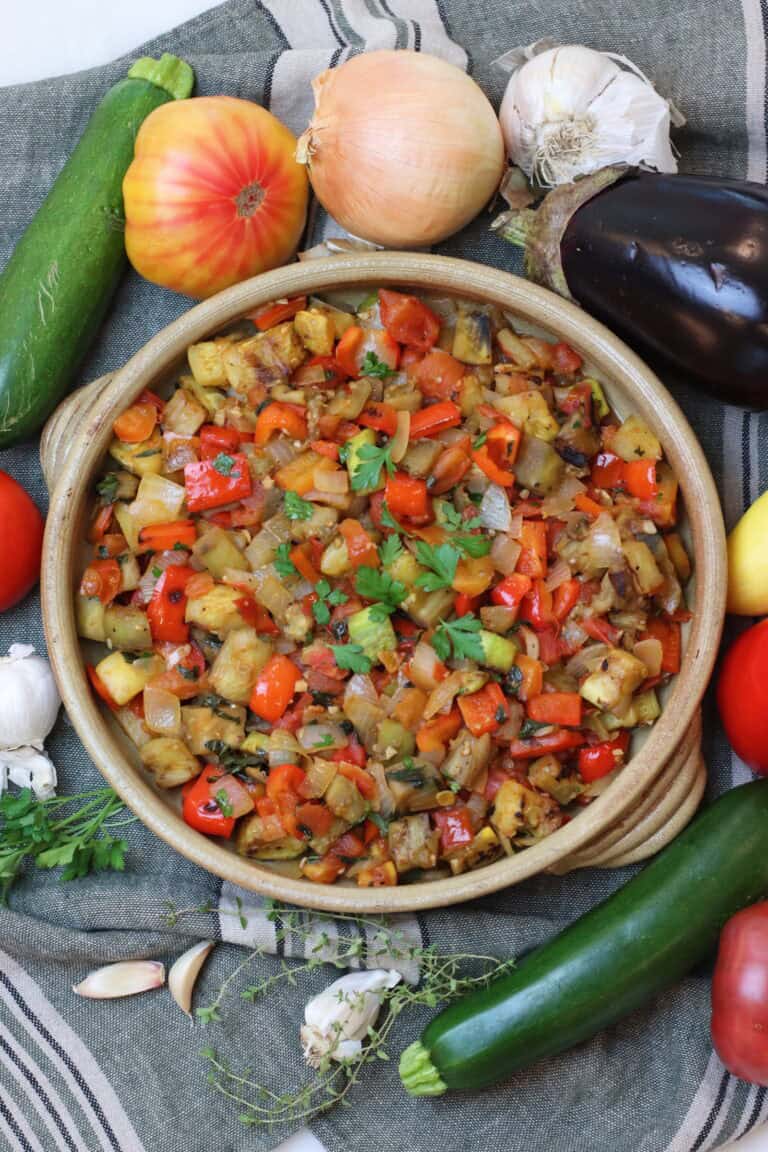This post contains affiliate links. Read our full disclosure policy here.
Crêpes are one of those timeless French treasures — simple, versatile, and endlessly loved. Whether you’re making sweet crêpes for dessert or savory crêpes for a light meal, the beauty of this authentic crêpe recipe lies in how adaptable it is. Think of them as thin pancakes, delicate and golden brown, that can be filled, rolled, or folded depending on your mood.
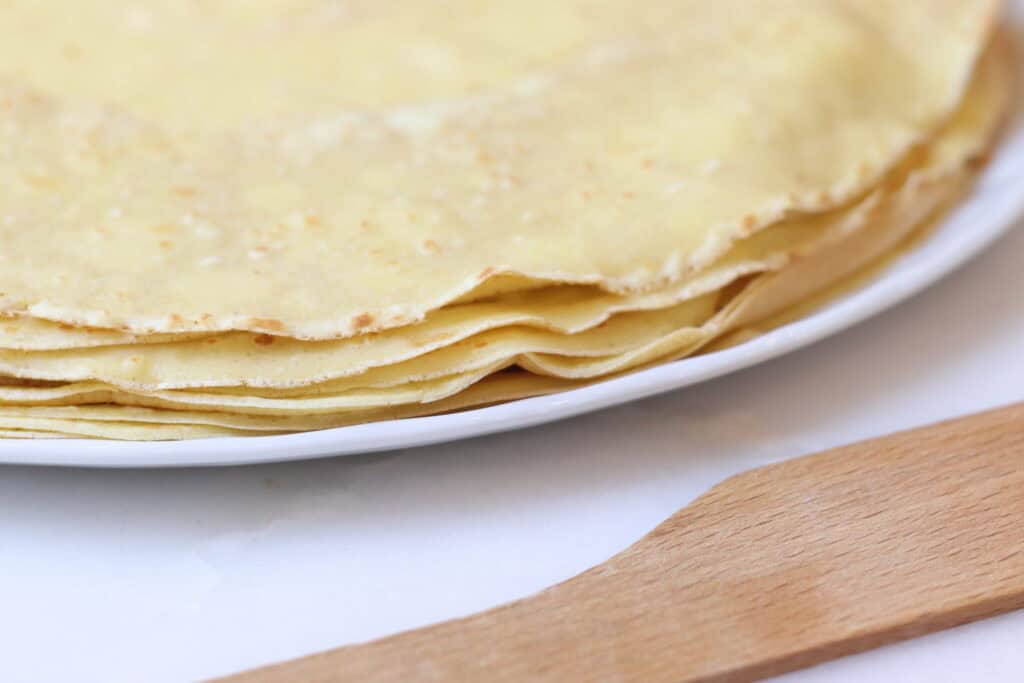
In my family, we enjoyed them sweet and rolled 100% of the time… and truthfully, we still do. But this recipe can easily be made with savory fillings — ham and cheese, mushrooms in a little cream sauce, or spinach with goat cheese — to name a few.
The French Ritual of Crêpes
In France, food is rarely just food — it’s an event, a ritual, a way of gathering. Crêpes are no exception. I can still picture my grandmother pulling out her well-seasoned crêpière, ladling the batter into the center of the pan, and using a practiced circular motion to spread a thin layer of batter.
The kitchen would fill with the comforting scent of melted butter and sugar. We children would hover at the edge of the table, eager for the first crêpe to be ready — though, as French families like to say, the first one is always a “test” crêpe. The edges of the crêpe would crisp ever so slightly, while the second side cooked to a perfect golden brown. She made it look effortless.
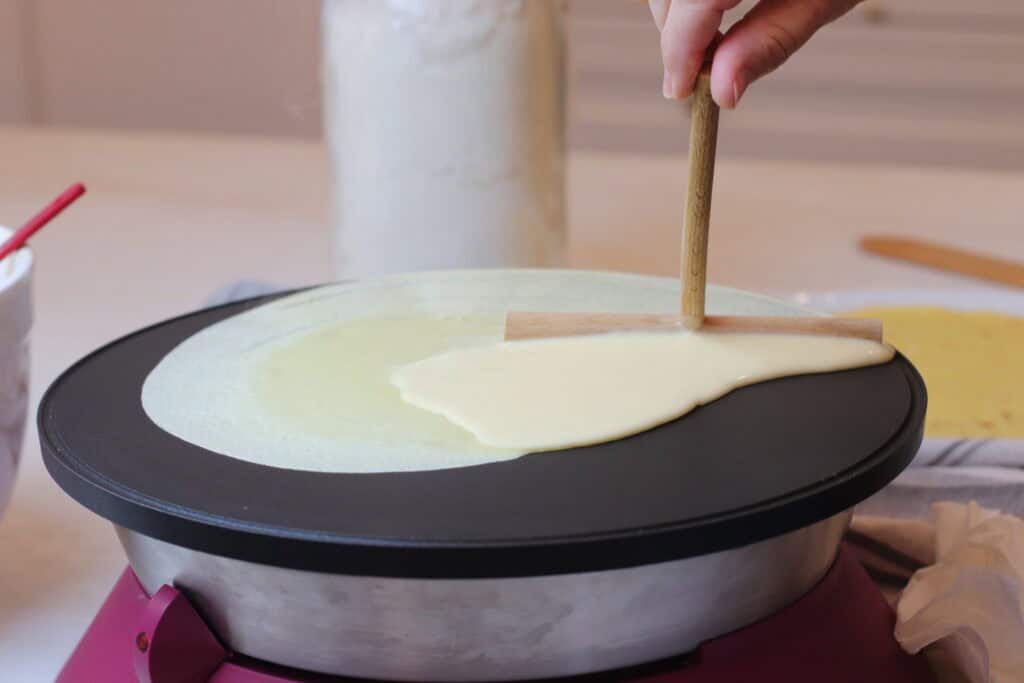
My Family’s Authentic Crêpe Recipe
This recipe is special — passed from my grandmother to my mother, and now to me. It’s an authentic crêpe recipe that uses only simple ingredients: flour, eggs, milk, and a pinch of salt. Sometimes we add a little vanilla extract or a splash of rum for dessert crêpes, or even a little lemon zest for flavor.
The good news is that making crêpes at home is far easier than people think. With just a mixing bowl, a whisk, and a frying pan, you can make homemade crêpes that rival those in France. They just take a little patience (letting the crêpe batter rest, preferably overnight), and a spreading technique that is easily learned.
Ingredient Notes
Making French crêpes doesn’t require any fancy ingredients — just a few pantry staples.
- Flour – I use organic, unbleached all-purpose flour.
- Milk – Whole milk at room temperature gives the best flavor, but 2% works fine.
- Eggs – Fresh eggs bind everything together and make the batter silky.
- Butter – A touch of melted butter keeps the crêpes tender.
- Salt – Just a pinch of salt balances the flavor.
- Optional flavorings – A splash of vanilla extract for sweet crêpes, or lemon zest and rum for a more traditional French version.
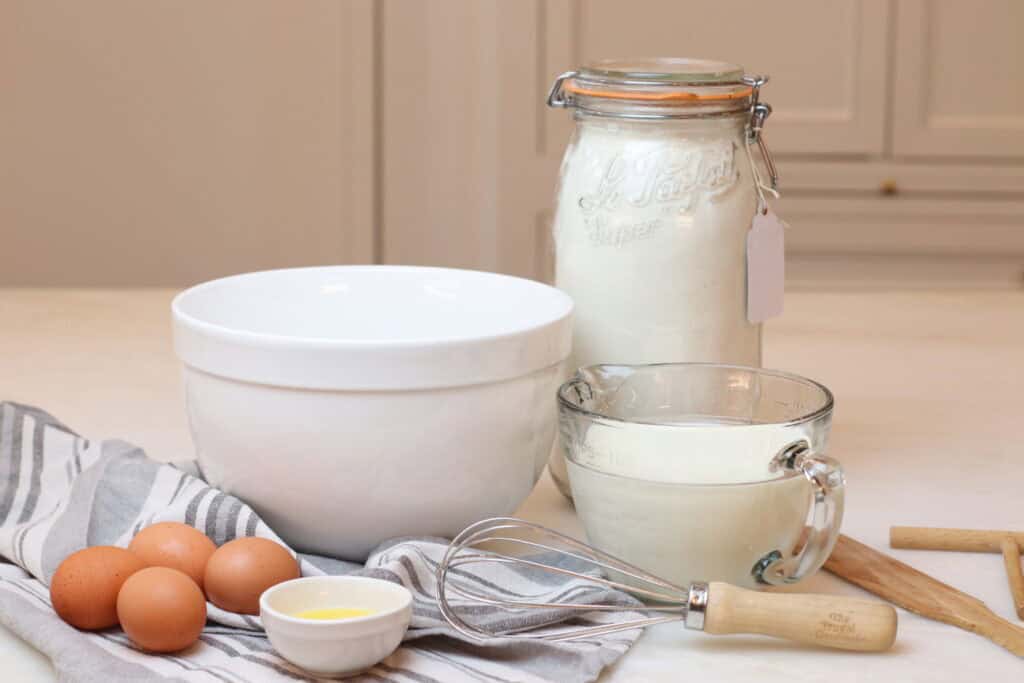
A little note: this batter needs to rest overnight, so you’ll want to plan ahead. I have successfully used this batter only a couple of hours after making it and chilling it. But, the overnight rest really brings out the full flavor. If you have the time, I recommend it.
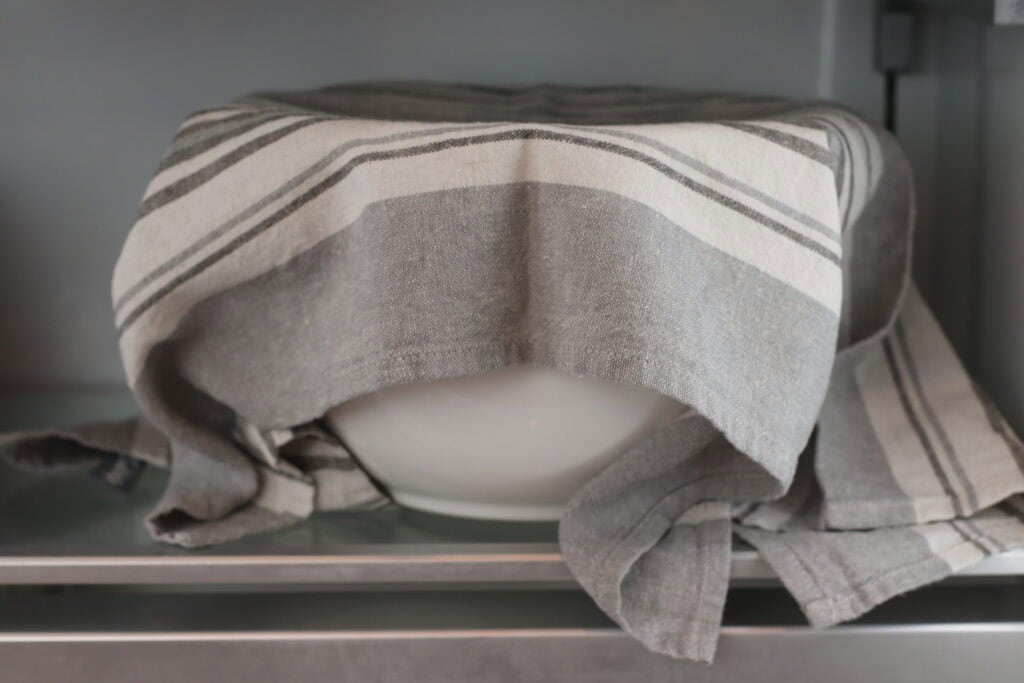
Cooking Tips for Perfect French Crêpes
- Always start with a hot pan — whether you use an electric crêpiere, a cast iron skillet, or nonstick pan.
- In my family, greasing the pan was almost a ritual in itself. My mother, grandmother, and great-grandmother all used a little “butter mop” — a small square of cotton cloth tied around the end of a wooden spoon with kitchen twine, dipped in melted butter. They would swipe it across the pan between each crêpe, keeping them from sticking and adding just the right amount of flavor.
- Use about 1/4-1/2 cup of batter poured directly in the center of the crêpiere or pan. The amount will depend on the diameter of your pan. Work quickly with a crêpe spreader or swirl to coat the bottom of the pan in a thin layer. If you need more tips on this, see my post on how to use a crêpe spreader.
- Cook the first side until the edges of the crêpe begin to lift. Flip with a metal spatula or crêpe turner. The second side only needs a few seconds.
- Don’t worry if the first crêpe doesn’t turn out — that’s normal. The pan usually needs one test run before the rest turn out beautifully. Use it as an opportunity to make adjustments to the amount of heat, butter or batter used.
With a bit of practice, you’ll be turning out delicious French crêpes one after another.
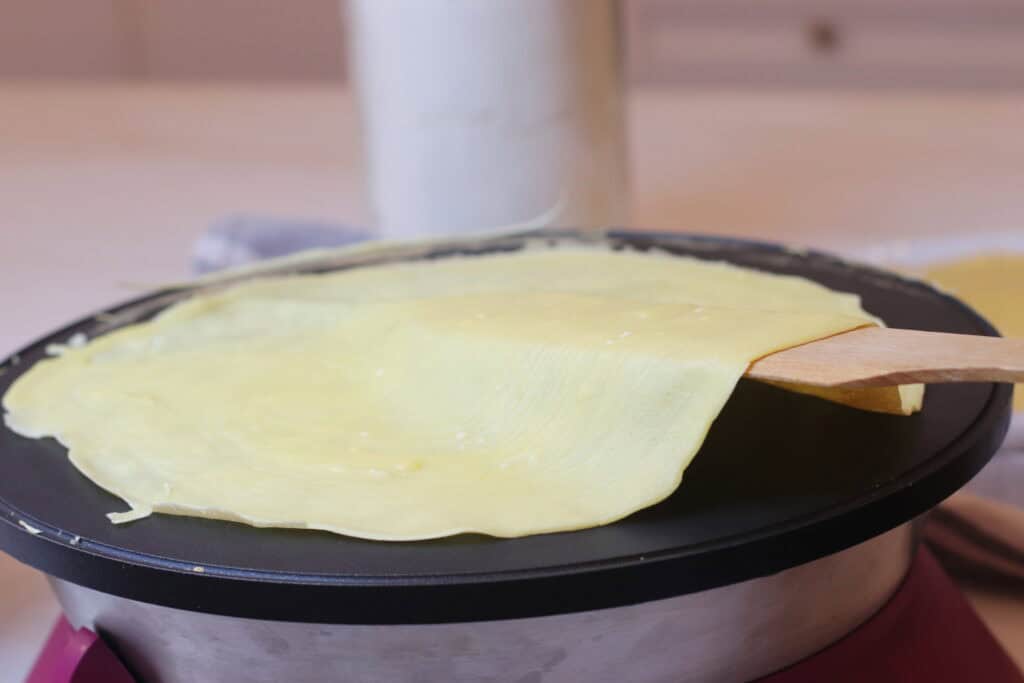
Troubleshooting Crêpes
Even with the best authentic crêpe recipe, things can go wrong. Here are some quick fixes:
- Lumpy batter? Whisk the wet and dry ingredients separately before combining. Strain if needed.
- Too thick? Add more milk to the batter to and swirl quickly or use a crêpe spreader to create a thin crêpe. You can also decrease the amount of batter poured onto the pan.
- Sticking to the pan? Make sure the pan is hot enough and lightly greased. Wipe with a paper towel (or your butter mop!) between crêpes.
- Tearing? Turn up the heat just slightly so the crêpe sets faster. Also, if using a crêpe spreader, don’t apply downward pressure, dragging it across the batter in a circular motion is best. See more tips here.
- Why does my first crêpe always fail? That’s part of the tradition — in France, the first one is often eaten by the cook!
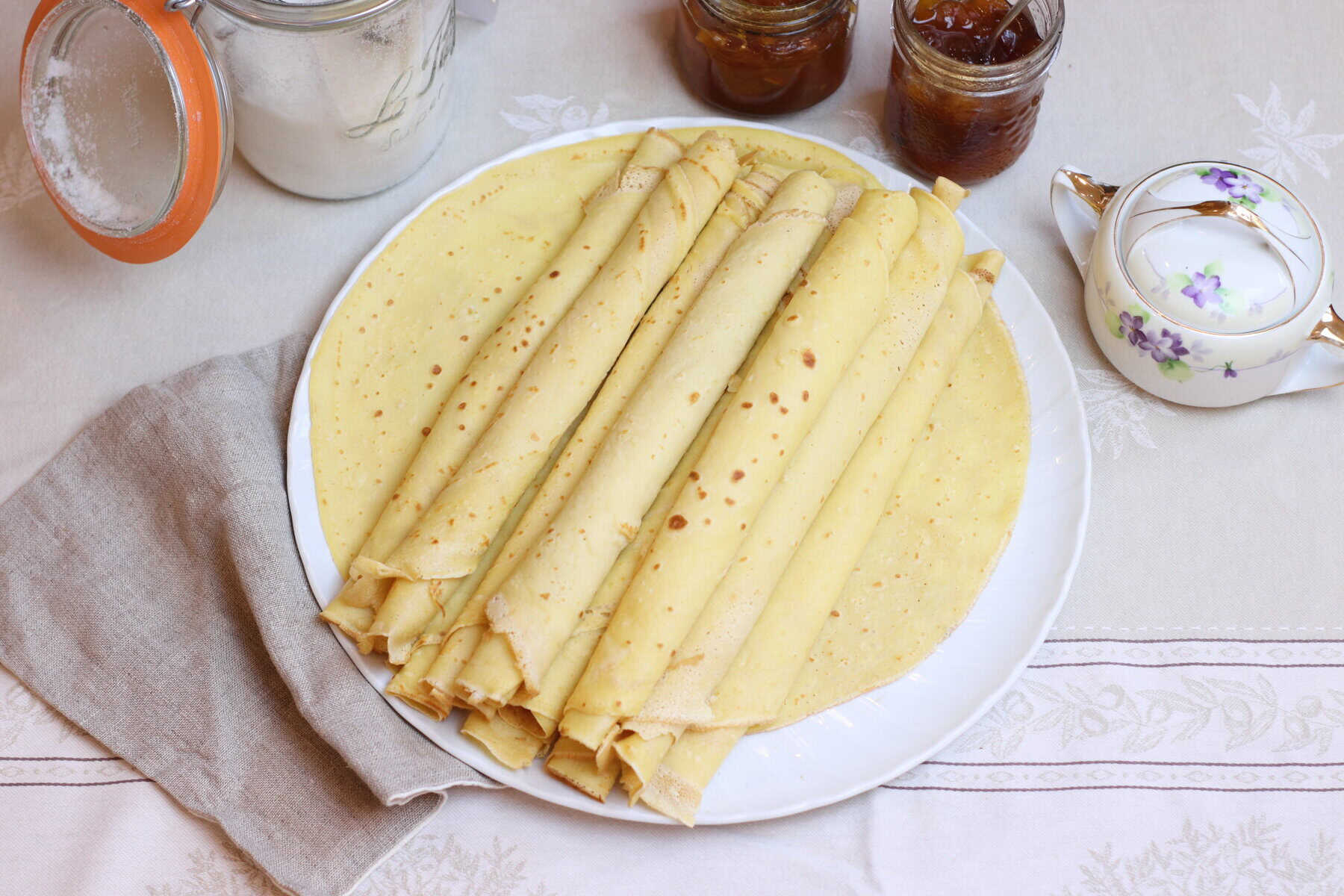
How to Serve Crêpes, the French Way
Crêpes are at their best when enjoyed together. Place them on a platter and let everyone choose their favorite fillings: sugar, vanilla sugar, Nutella, jams, or chantilly. Roll them up or fold them neatly into quarters for a simple but elegant presentation.
In France, it’s common to enjoy crêpes on Sunday afternoons for le goûter (the 4 o’clock snack) with a cup of coffee or tea.
And of course, crêpes even have their own holiday: La Chandeleur, celebrated every year on February 2nd, when French families gather to make crêpes together.
Crêpes also make a wonderful breakfast-for-dinner option. Paired with eggs, ham, or sautéed vegetables, they become a complete meal.
In our home, the very last crêpe always went to my grandmother. She made sure every drop of batter was used, which meant her final crêpe was thicker and a little fatter than the rest — and somehow, that one always felt the most special.
This family recipe is the best crêpe recipe I know — delicate, buttery, and authentically French.
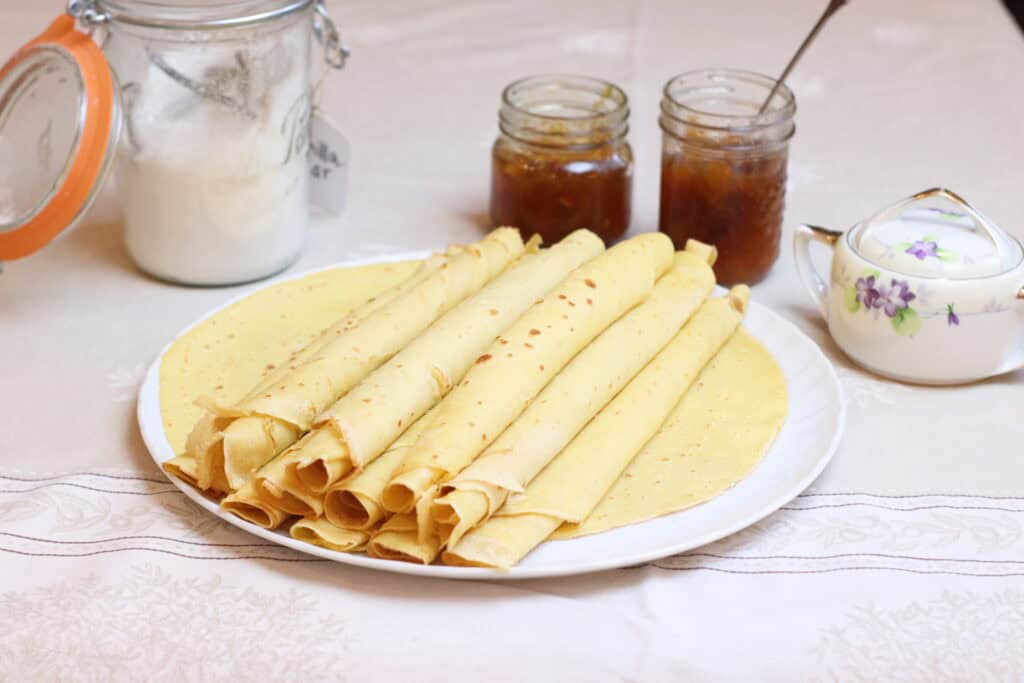
Frequently Asked Questions
What’s the difference between French crêpes and American-style pancakes?
Crêpes are thin and delicate, made without leavening, while American pancakes are fluffy and thick (due to added leaveners).
Can I make crêpes ahead of time?
Yes. Stack cooled crêpes on a plate, wrap tightly with aluminum foil, and refrigerate for up to 3 days. Warm gently before serving.
Can crêpes be frozen?
Absolutely. In fact, the batter AND the finished crêpes can be successfully frozen. Freeze cooked crêpes in a stack or rolled. More details below.
Why do the French eat crêpes on La Chandeleur?
It’s a tradition tied to good luck, abundance, and the coming of spring. Families gather around the table, flipping crêpes together — often with little superstitions and rituals for prosperity.
Storage & Reheating at a Glance
- Refrigerator: Keep cooked crêpes stacked or rolled, tightly wrapped in aluminum foil, for up to 3 days.
- Freezer (Batter): Pour batter into a large zip-top bag, lay flat, freeze up to 2 months. Thaw overnight in the fridge.
- Freezer (Cooked Crêpes): Stack or roll, wrap well with aluminum foil, place in a large ziptop bag, and freeze up to 2 months. Thaw on counter.
- Reheating: Warm in a skillet over low heat or microwave for just a few seconds until pliable.
A Nourishing Perspective: For me, crêpes carry more than flavor — they carry memory. In my family, they were never eaten alone, but always around a table filled with chatter, laughter, and a little waiting for the next one to come off of the pan. That’s the heart of the French way: food as a reason to gather, to linger, and to enjoy one another’s company.
A plate of warm crêpes invites friends and family to slow down together — one delicate crêpe at a time.
Bon appétit — and may these crêpes bring as much joy to your table as they have to ours.
Gaby
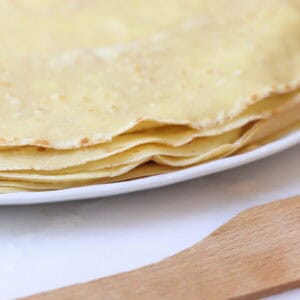
My French Family’s Authentic Crêpe Recipe
Equipment
- 1 Kitchen scale
- 1 Large mixing bowl
- 1 Crepiere or flat skillet or griddle at least 10 inches in diameter
- 1 Crêpe spreader and spatula optional, but recommended
- 1 small ladle optional for pouring batter
Ingredients
- 400 g all-purpose flour sifted; about 3 1/4 cups
- 1 pinch salt
- 4 eggs beaten
- 0.75 liter whole milk room temperature; about 3 cups
- 2 tbsp butter melted
Optional add-ins for sweet crêpes
- 2 tbsp dark rum
- 2 tbsp lemon zest
- 1 tsp vanilla extract homemade or store bought
Instructions
- In a large bowl, whisk together the flour and salt. These are your dry ingredients.
- In a separate container, beat the eggs, then slowly add the milk and melted butter. Mix until smooth.
- Make a well in the center of the flour and pour in the liquid ingredients. Whisk until you have a lump-free crepe batter.
- Cover and chill. For best results, rest overnight in the refrigerator, but a few hours will also work.
- When ready to cook, heat a lightly greased nonstick pan or cast iron skillet over medium heat. Wipe with a paper towel dipped in a tablespoon of butter to prevent sticking.
- Pour about 1/4 cup of batter into the center of the pan. (Use more or less to adjust to the diameter of your pan). If using a crepe spreader, work quickly in a circular motion to spread the batter. If working without one, tilt the pan quickly in a circular motion to create a very thin layer of batter covering the bottom of the pan.
- Cook the first side until the edges of the crepe begin to lift and the bottom is golden brown. Flip carefully with a spatula, and cook the second side briefly.
- Transfer to a plate and cover with a towel to keep warm (if they last that long!) while you repeat.
- Fill with your filling of choice and roll or fold.
Notes
- This is the exact recipe that my family uses. So, the measurements are metric. I’ve included approximate USCS measurement adjustments for ease.
- The first crêpe is usually a tester — don’t be discouraged! Adjust the heat or add a touch more butter if needed.
- A thin crêpe is the goal: too much batter makes them heavy like American-style pancakes.
- A crêpe spreader is not necessary, but highly recommended for achieving a thin crêpe
- Refrigerator: Keep cooked crêpes stacked with parchment between them, tightly wrapped, up to 3 days.
- Freezer (Batter): Pour batter into a zip-top bag, lay flat, and freeze up to 2 months. Thaw overnight in the fridge before using.
- Freezer (Cooked Crêpes): Stack with parchment paper between each crêpe, wrap well, and freeze up to 2 months. Thaw on the counter.
- Reheating: Warm gently in a skillet over low heat or microwave for just a few seconds until pliable.



